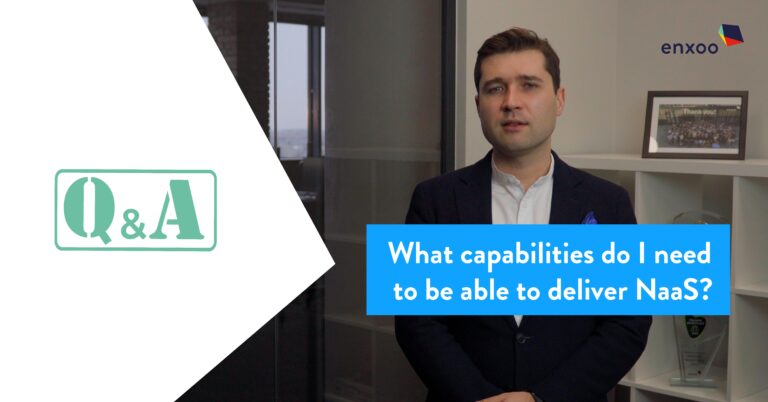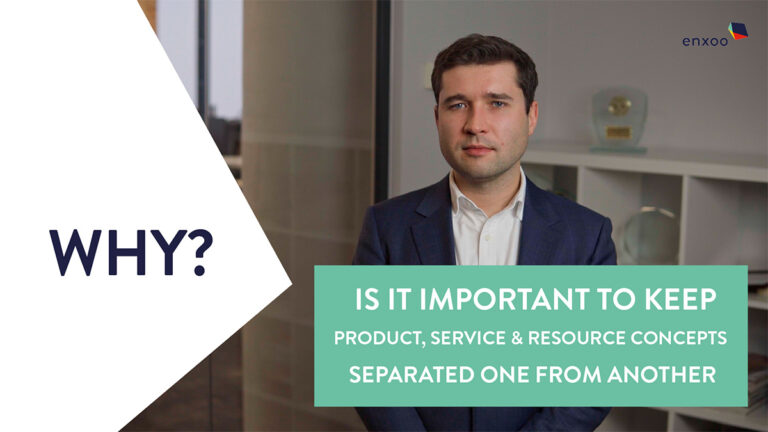Enxoo Q&A – #APIfication channel, episode #07, ODA – Open Digital Architecture
🔍 In this video, our expert explains what are the key takeaways for service providers to learn from ODA – Open Digital Architecture by TM Forum.
Pozostań z nami na bieżąco, sybskrybując nasz newsletter
Otrzymasz nasz newsletter co kilka tygodni, zawierający skondensowany przegląd najważniejszych informacji
Transcript
Hi Everyone,
Welcome to the next episode of our Q&A series. My name is Maciek, I’m one of the leaders of Enxoo Comms Industry Practice and in this series of videos, I’m presenting our point-of-view on some topics related to the Comms industry APIfication.
I have announced Today’s episode almost three months ago, back in Episode #1 where I tried to explain the differences between TM Forum and MEF. As you already know, MEF have their own LSO Framweork, which I explained in the Episode #2. And to keep the balance - Today we’re going to take a look into the TM Forum garage. So a question for Today - ODA - Open Digital Architecture? What is it?
Let me try to explain that in brief.
About ODA - Open Digital Architecture
ODA - Open Digital Architecture is a relatively new blueprint and reference framework created by TM Forum aimed to help Communications Service Providers on their efforts to revolutionize their IT and network systems and evolve from Traditional Telco into truly Digital Service Provider. Service providers are pressed to do that because it’s a challenge for them to compete with digital natives, new companies coming from the software space, the likes of AWS, Microsoft that are eating their cake. The ODA programme was launched in 2018 and one of the main ideas was to break the traditional view of the CSP IT systems landscape, the one with monolithic, inflexible BSS and OSS silo into more flexible, agile, component-based approach.
Now, it’s not my objective here to explain in detail all the concepts of the ODA, because it’s actually quite extensive and also very well explained by TM Forum and if you’d like to learn it first-hand - you can find several links that might be a good start under this article. However what I’d like to do in this episode - I’d like to share a few key takeaways that I find the most interesting and important and might help you to get your head around that concept.
Takeaway #1 - Breaking BSS/OSS Silo
ODA breaks monolithic BSS/OSS architectures into more modular, component-based approach. I perceive it as a TM Forum response to the whole microservice revolution that has started more than a decade ago. So the idea is pretty much the same - instead of big, inflexible monolithic systems, let’s define smaller components, or so-called services, with clearly defined responsibility, that are easier to manage and that encapsulate their functionality behind a standardised TM Forum Open API interface.
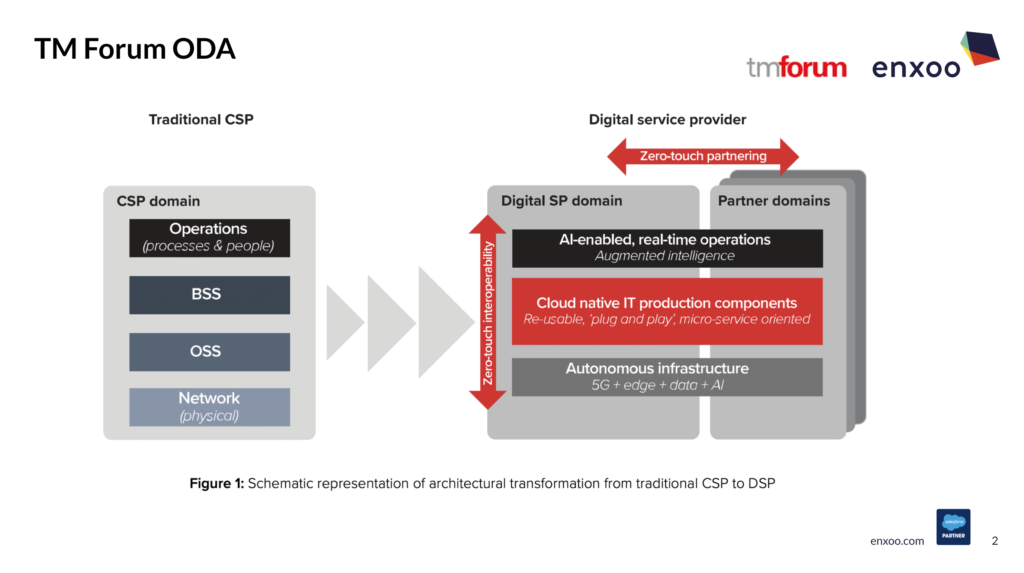
So in this new approach, instead of one monolithic system that does everything from managing customer information, capturing orders to generating customer bills, we might have a separate component - service responsible for Customer Management. Separate one for Product Catalog Management, separate for Order Management. All of them communicating with each other with the use of standardized TM Forum Open APIs.
Takeaway #2 - New Functional Groupings
ODA defines so-called functional blocks - logical groupings of these components. I wanted to bring it up because I think it’s an interesting evolution of the traditional architecture layers that define business (BSS) and operational (OSS) layers. So in the ODA, at the highest level, we have 5 functional groupings:
- Engagement Management,
- Party Management,
- Core Commerce Management,
- Production
- Intelligence Management.
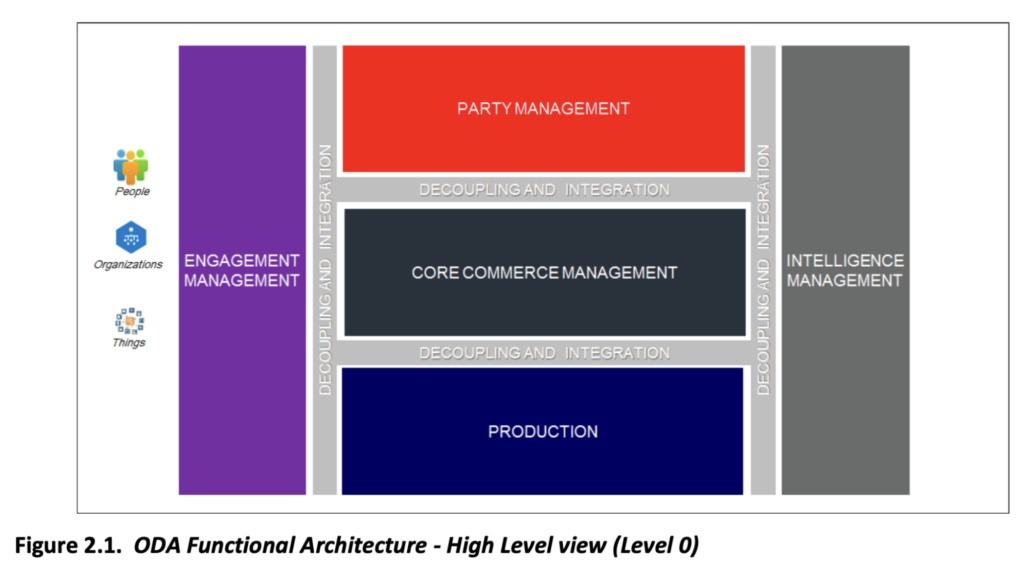
And within each of those functional groupings, we’ll have multiple components talking with each other. There is also the 6th functional block called decoupling and integration - which is like glue, keeping everything together.
What I find extremely interesting is that ODA clearly defines the character and responsibility of components within each grouping and classifies them as systems of engagement - responsible for providing multichannel interactions (i.e. through front-ends or APIs), systems of record - responsible for storing the data and for the actual execution of business processes and system of insights - responsible for aggregating data to provide business insights.
Takeaway #3 - Moving "digital boundary"
I believe that this is quite an interesting concept, because one of the promises of ODA is a greater flexibility. And with such a split in responsibility, what happens is related to the takeway #3 - which is the attempt to move the “old” digital boundary between systems of engagement and systems of record. In the traditional, monolithic architectures it was frequently very difficult to compose solutions fitted to the expected customer experience. With the new approach and composable and reusable services - there is a promise to be able to do it much easier.
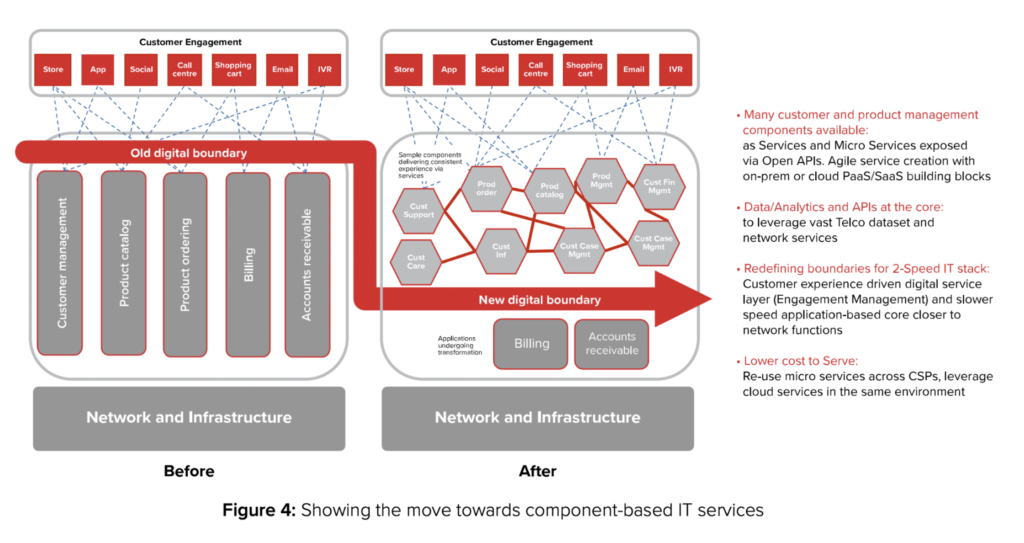
What it means in practice is that we might have multiple components in the engagement layer. Multiple customer portals, maybe a mobile application, a front-end for customer service agents as well as the self-service API for enterprise use-cases - and they all might require to feed the data from their systems of record in a different manner. So ODA approach promises such flexibility.
Apart from these three takeaways, I would also like to mention that ODA proposes modern software architectural principles. With cloud-native, open-standards based approach it is pushing many vendors to navigate into that direction, and we’ve also seen ODA topic as an important one on the agenda for many service providers, enabling them to increase flexibility and reduce costs of software development and maintenance.
Podsumowanie
I hope you liked this brief explanation. As I mentioned at the beginning, there are links to supporting materials under this post. Join our newsletter and subscribe to this channel if you’d like to get notified about new episodes of our Q&A series.
And if you’d like to learn more or get some help with your systems architecture design following frameworks like ODA or LSO, I wanted to announce that we’re launching a free expert consultation service, where you can meet one of our consulting experts to discuss the challenges you have. Book it Today through our website.
Cheers!
Interesting Links
- TM Forum ODA webpage - https://www.tmforum.org/oda/
- TM Forum recording - Masterclass: Applying TM Forum's Open Digital Architecture and Open APIs - https://www.youtube.com/watch?v=SrGwVDDpzhA
